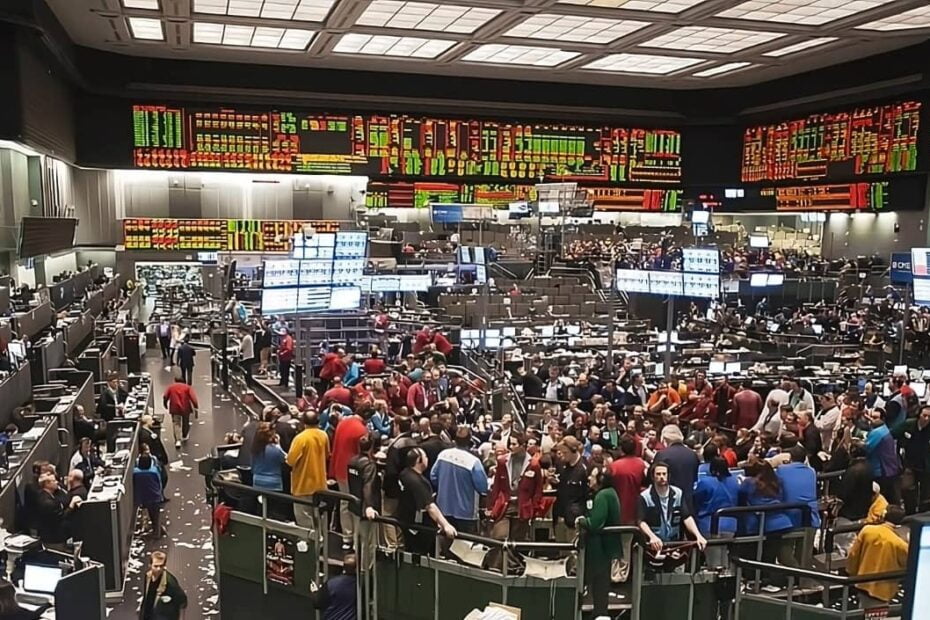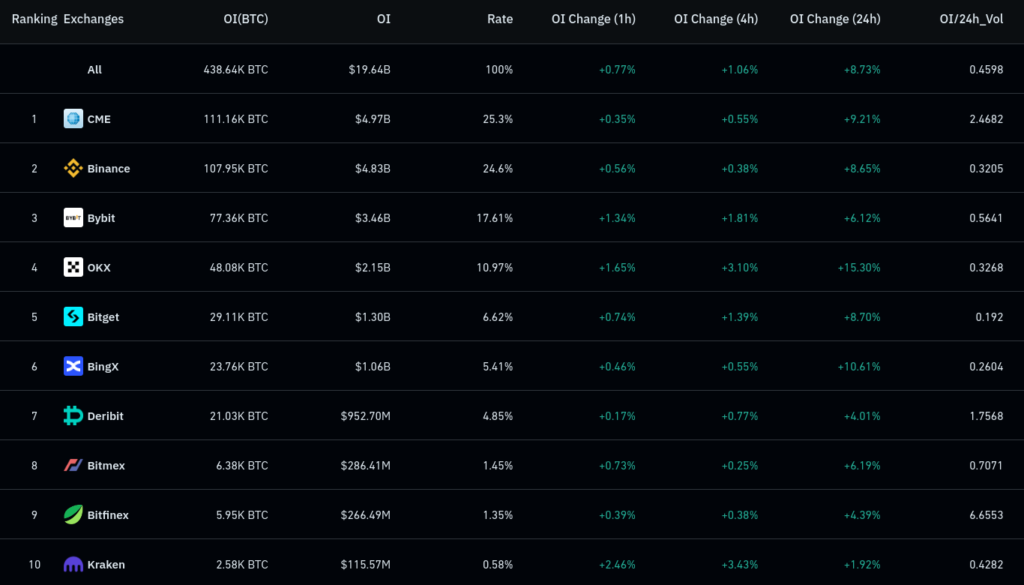The Chicago Mercantile Exchange (CME), a U.S. financial derivatives and commodities exchange, experienced a significant increase in trading volume during January.
CME Booms as Trading Volume Hits 3-year Highs. Indeed, this increase came after spot Bitcoin exchange-traded funds (ETFs) received approval from the Securities and Exchange Commission (SEC) in the United States. Incidentally, the Chicago Mercantile Exchange (CME), often referred to as the “Chicago Merc” or “the Merc,” is, by definition, a global commodities exchange that trades derivatives such as futures and options. In reality, large institutions use CME to trade Bitcoin futures. These futures act as a hedge against possible price fluctuations.
Record trading volume on CME following Bitcoin ETF approval
Specifically, according to data from CCData, total derivatives trading volume on CME increased by 35% in January, reaching $94.9 billion. It is the highest trading volume recorded on the exchange since October 2021. The approval of spot Bitcoin ETFs in January was an important milestone for institutional investors, as it allows them to gain exposure to the world’s most widely traded cryptocurrency.
1/2 Chart of the Week: For the first time since November 8 2023, Binance's #Bitcoin open interest surpassed the CME.
— CCData (@CCData_io) February 6, 2024
The CME had experienced a notable increase in $BTC open interest, driven by optimism leading up to the approval of the Bitcoin spot ETF. pic.twitter.com/UqLPGseqzd
In January, Bitcoin futures trading volume on CME rose 42% to $73 billion. According to a report by CCData, this was due to institutional traders liquidating their positions following the approval of spot Bitcoin ETFs in the United States.
Similarly, CME has recently surpassed Binance, the world’s largest centralized exchange on trading volume regarding Bitcoin futures open interest (OI) volume. According to CoinGlass, the Chicago Mercantile Exchange (CME) continues to surpass Binance as the leading exchange according to Bitcoin futures open interest. Specifically, it now stands at approximately 106,000 BTC on CME and approximately 105,000 BTC on Binance.
In closing, the CCData report suggests that the increase in futures trading volume and decrease in options volume indicate deleveraging and an end to speculation by institutional investors who were mulling the Bitcoin ETF approval. I bow out with this quote from Andreas Antonopoulos: “The future belongs to cryptocurrencies, and Bitcoin ETFs are the first step towards that new financial era.”
BlackRock and Fidelity Lead Bitcoin ETF Market in 2024.
In an impressive start that has marked a before and after in the cryptocurrency industry, the BlackRock iShares Bitcoin Trust (IBIT) has positioned itself as one of the top five exchange-traded funds (ETFs) of 2024, reaching record investment figures in just 17 days since its launch. This milestone highlights the growing interest in digital assets among traditional investors. It also underscores confidence in the strength and future of the Bitcoin market.
BlackRock’s IBIT has managed to capture an impressive $3.2 billion net inflows, positioning itself solidly among the investment giants. These funds, which have traditionally dominated the market with products based on the S&P 500 and the total equity market, have seen the Bitcoin ETF quickly climb to the top spots, second only to the iShares Core S&P 500 ETF (IVV) and the Vanguard 500 Index Fund ETF (VOO), with $13 billion and $11.1 billion in net inflows, respectively.
Fidelity, with its Wise Origin Bitcoin Fund (FBTC), has also proven to be a strong contender in the Bitcoin ETF market, securing a place in the top ten with $2.7 billion in net inflows. This achievement reflects a growing acceptance and demand for cryptocurrency investments through traditional financial vehicles.
A New Era for Bitcoin ETFs
Although investment in new bitcoin ETFs has shown signs of slowing recently, both BlackRock’s IBIT and Fidelity’s FBTC continue to experience steady positive flows. This phenomenon highlights the uniqueness of these funds in the current landscape, marking a stark contrast to the volatility and uncertainty that often characterize direct cryptocurrency investments.
The rapid rise of BlackRock and Fidelity’s Bitcoin ETFs in 2024 is not only a testament to investors’ growing appetite for Bitcoin and cryptocurrencies. The rising volume also signals a significant shift in how these assets are perceived and integrated into the global financial ecosystem. As more investors seek exposure to cryptocurrencies through regulated and familiar vehicles, the future of bitcoin ETFs looks not only promising but also as a potential catalyst for mass adoption of cryptocurrencies.


